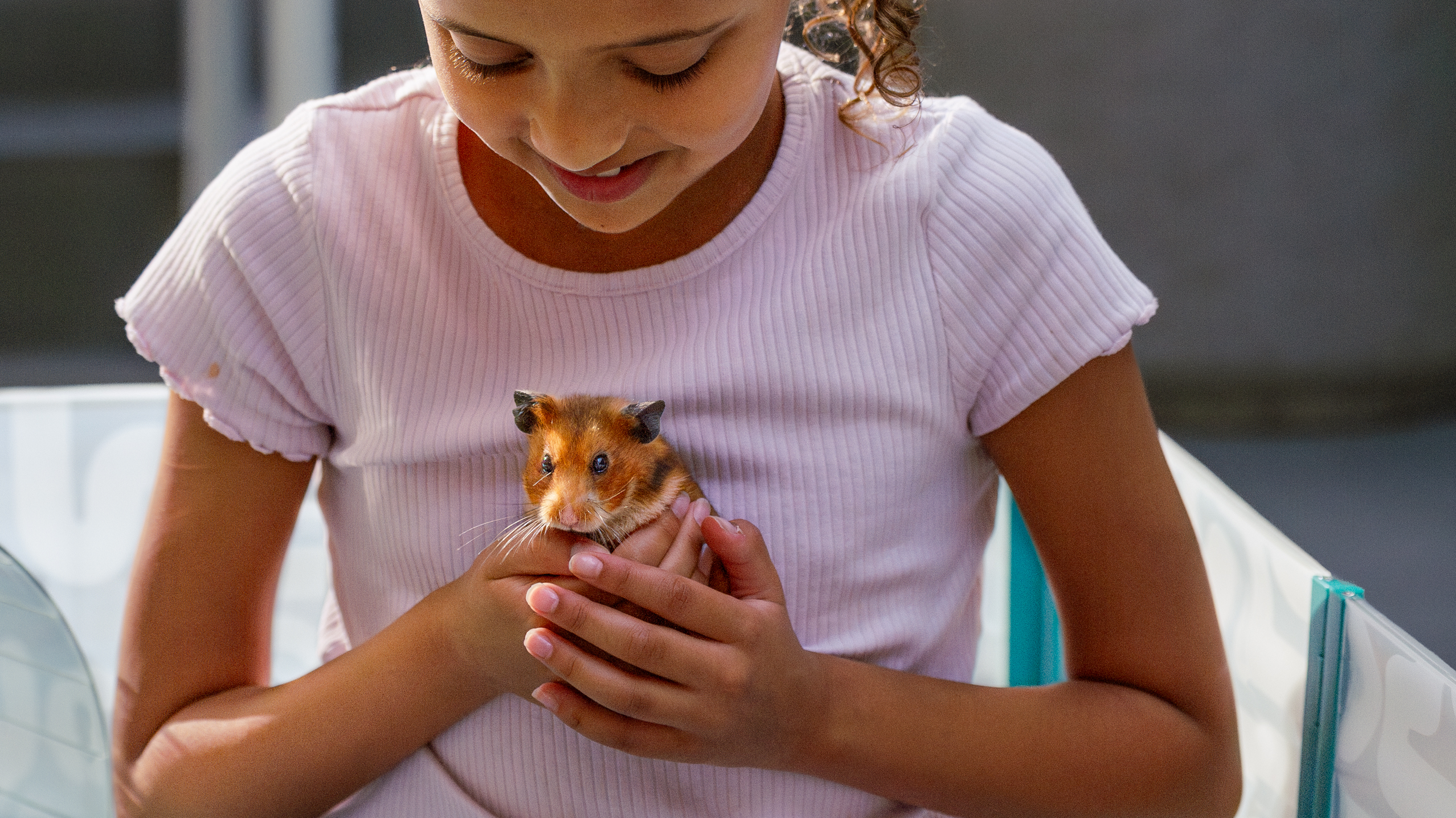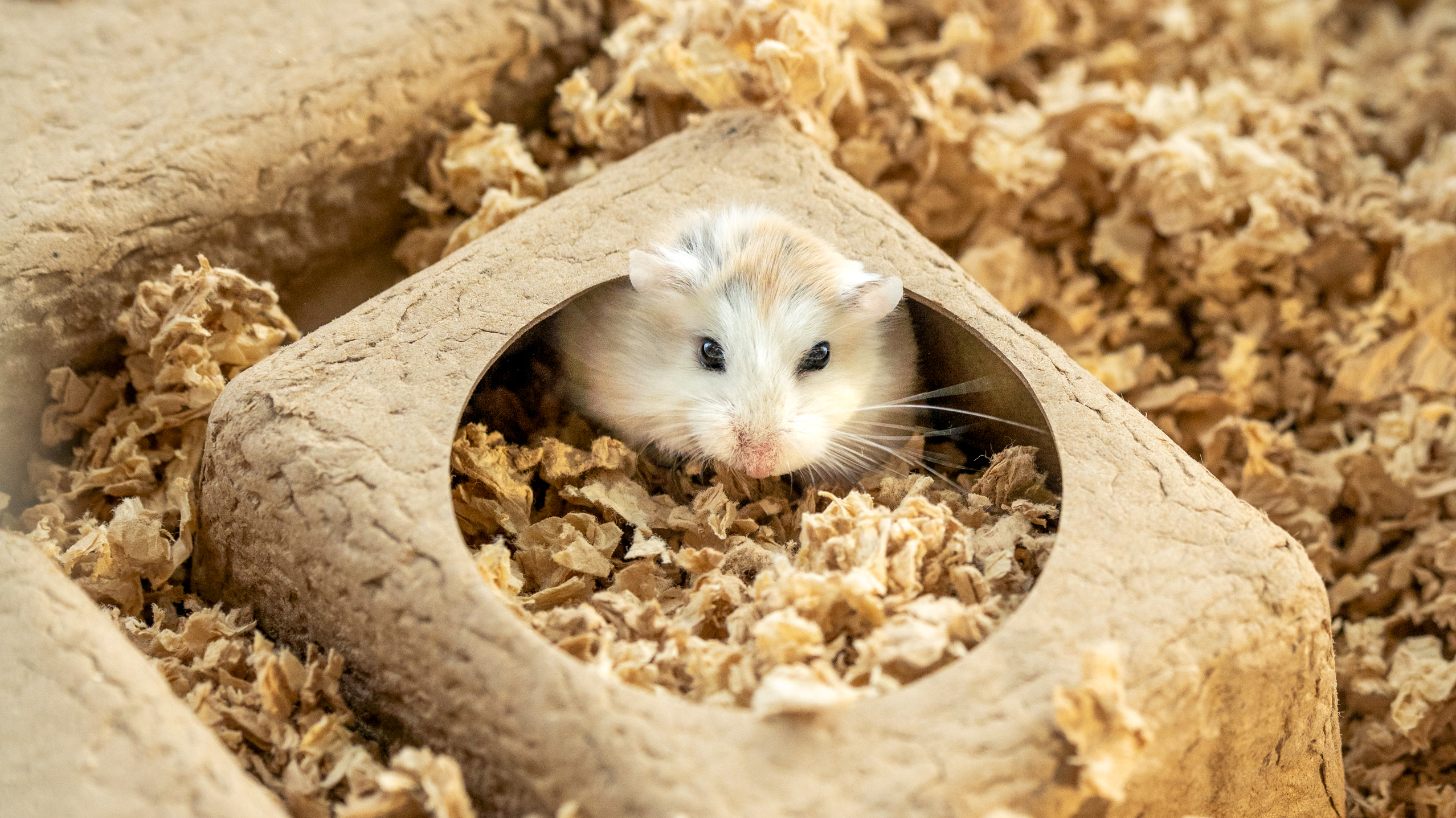There are 5 hamster breeds kept in homes all across the world. It might not seem like a wide variety, but species of hamsters are vastly different in their personalities and needs. You’ll also find a wide array of colours and coats as varieties within each type of hamster. Discover the differences in the different hamster breeds, and the variations that can be found for each.

Hamsters come in many different shapes and sizes
Full-sized hamsters
There are two “large”, or standard-sized varieties of hamsters that have been domesticated. One is the most common breed with the longest standing history for domestication, and the other is relatively new and rare. Standard-sized hamsters are popular among first-time owners and children, as they’re docile and easier to handle than smaller breeds.
Syrian
The Syrian hamster has been domesticated since 1930, and is what most people think of when they visualize a hamster. In the wild, they can be found in many areas of the Middle East. Also known as the “Golden” or “Teddy Bear” hamster, this breed can be found in a variety of colors, including:
- Gold or cream
- White
- Black
- Various shades of brown or red
- Gray
- Lilac
Among these colors, Syrian hamsters can have various coat patterns like spots or bands. Breeders are also working to produce more colors and markings, like tortoiseshell and tri-color. The typical hair coat of a Syrian hamster is short and dense, but there are varieties that have long, satin, or Rex (curly) coats.
Syrian hamsters grow to be 6-8 inches in length and weigh around 4 to 5 ounces. They are very territorial and need to be housed by themselves. Syrian hamsters are known for being the most sociable and outgoing of all of the domesticated species.

Syrian hamsters hail from the Mount Aleppo region in Syria
Chinese
Chinese hamsters are considered full-sized hamsters, reaching 3-5 inches in length, but are sometimes referred to as dwarfs when compared to Syrian hamsters. Their natural habitat is in the deserts of China and Mongolia. They have slightly longer tails than other hamster species, and aren’t naturally sociable with other hamsters and prefer to be housed alone. They began their domestication in the 1980s, and can be found in two color varieties: their typical, mousy-brown, and spotted.
Dwarf hamsters
Dwarf hamsters are rising in popularity, but are relatively new to homes, with their domestication taking place in the 1970s. Their native territory spans throughout Mongolia, Siberia, and Kazakhstan. Dwarf breeds are very quick, making them more difficult for some people and children to handle. It’s possible to successfully keep some species of dwarf hamsters in same-sex pairs or small groups, but like larger hamsters, they do fine when housed alone.

Dwarf hamsters come from many different parts of the world, such as China and Russia
Russian Campbell
The first dwarf hamster to enter the pet world, the Russian Campbell, is just 4 inches long when fully grown. Also known as “Campbell’s dwarf hamster”, this breed’s standard color is a mousy-brown with a dark stripe running down the back. Breeders have been working to introduce other colors or patterns, but the standard coloring is most common. Cambell’s dwarf hamsters can be social within their species, making it possible to keep same-sex pairs or small groups together introduced at a young age. But, most Russian Campbell hamsters can live alone just fine.
Russian Winter White
Russian Winter White hamsters are most commonly called “Russian Dwarf hamsters.” In the wild, their typical grayish-brown coat changes to a shade of white to blend into their snowy surroundings. In captivity, not all Winter White hamsters will make this change — which is why they are most commonly marketed and referred to as Russian Dwarf hamsters. This breed grows to be around 3 and a half inches long, and can be found in diverse colors through select breeders. Russian dwarf hamsters are friendly with their owners, but prefer to be housed alone.
Roborovski
Roborovski hamsters, also known as “Robo hamsters” or “Robos”, are the smallest species of domesticated hamsters — growing to just 2 inches in length. It's recommended for Robos to be housed alone. Their small size makes them difficult to hand tame, but this species is very active and entertaining to watch zoom around their enclosure. Roborovski hamsters come in a variety of colors, and have signature white markings above their eyes that resemble eyebrows.
Similarities among species
There are a few universal similarities between species of hamsters. These “pocket pets” are small, furry members of the rodent family that share many characteristics. All hamsters:
- Are nocturnal
- Have short, stubby tails
- Use their cheek pouches for food and bedding
And, with the exception of Roborovskis, all domesticated hamsters prefer to be housed alone.
Omlet and your hamsters
While similar in their habits and preferences, hamsters all have their own unique personalities that can be seen on full display when their needs are met. We invent hamster products that support their natural behaviors and provide the ideal hamster housing for your small pets to live their biggest lives.
Comments
There are no comments just yet